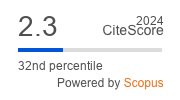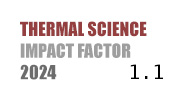ABSTRACT
Under the current requirements of environmental protection, carbon peaking and carbon neutrality goals, the capacity of the new energy interconnection network is increasing day by day. The thermal power unit requires the ability of rapid load adjustment to meet the requirements of real-time power balance. However, when the unit is in a variable load condition, the denitrification system is inefficient or even inoperable. The NOx emission is large, which makes it difficult to meet environmental protection requirements. In this study, a new method for predicting reductive products in the preheating process is proposed, introducing the gasification mechanism into the pulverized coal preheating process. The effects of air coefficient on combustion temperature, velocity, O2, CO2, CO, CH4, and H2, volatile matter and NOx emission are investigated by numerical simulation. It is demonstrated that the gasification mechanism is applicable to predict the reduction products and NOx during preheating. Internal combustion burners can stabilize the precipitation of volatile matter, CH4, CO, and H2. The burner outlet temperature and flow rate decrease with decreasing air coefficient. The local maximum concentration of volatile matter and CH4 are 8.3 vol.% and 2.54 vol.%, respectively. The CO concentration increases with decreasing air coefficient under the effect of CO2 gasification reaction. When the air coefficient is 0.33, the NOx concentration at the burner outlet is 2.8 mg/Nm3 (at 6% O2).
KEYWORDS
PAPER SUBMITTED: 2022-09-19
PAPER REVISED: 2022-12-10
PAPER ACCEPTED: 2022-12-18
PUBLISHED ONLINE: 2023-03-11
THERMAL SCIENCE YEAR
2023, VOLUME
27, ISSUE
Issue 5, PAGES [4021 - 4034]
- Lv, Z., et al., Experimental Investigation on NO Emission of Semi-Coke under High Temperature Preheating Combustion Technology, Fuel, 283. (2021), 119293
- Liu, X., et al., Mechanism Study of Nitric Oxide Reduction by Light Gases from Typical Chinese Coals, Journal of the Energy Institute, 93 (2020), 4, pp. 1697-1704
- Ouyang, Z., et al., The Effect of Limestone on SO2 and NOx Emissions of Pulverized Coal Combustion Preheated by Circulating Fluidized Bed, Fuel, 120 (2014), Mar., pp. 116-121
- Rabovitser, J., et al., Development and Testing of a Novel Coal Preheating Technology for NOx Reduction from Pulverized Coal-Fired Boilers, Gas, 1 (2003), 2, 4
- Zhu, J., et al., An Experimental Study on NOx Emissions in Combustion of Pulverized Coal Preheated in a Circulating Fluidized Bed, Energy and Fuels, 27 (2013), 12, pp. 7724-7729
- Ren, Q., Bao, S., Combustion Characteristics of Ultrafine Gasified Semi‐Char in Circulating Fluidized Bed, The Canadian Journal of Chemical Engineering, 94 (2016), 9, pp. 1676-1682
- Yao, Y., et al., Experimental Study on Nitrogen Transformation in Combustion of Pulverized Semi-Coke Preheated in a Circulating Fluidized Bed, Energy and Fuels, 29 (2015), 6, pp. 3985-3991
- Choi, C. R., Kim, C. N., Numerical Investigation on the Flow, Combustion and NOx Emission Characteristics in a 500 MWE Tangentially Fired Pulverized-Coal Boiler, Fuel, 88 (2009), 9, pp. 1720-1731
- Zhou, H., et al., Numerical Simulation of The NOx Emissions in a 1000 MW Tangentially Fired Pulverized-Coal Boiler: Influence of the Multi-Group Arrangement of the Separated over Fire Air, Energy and Fuels, 25 (2011), 5, pp. 2004-2012
- Liu, H., et al., Effect of Two-Level over-Fire Air on the Combustion and NOx Emission Characteristics in A 600 MW Wall-Fired Boiler, Numerical Heat Transfer - Part A: Applications, 68 (2015), 9, pp. 993-1009
- Kuang, M., et al., Numerical Investigation on Combustion and NOx Emissions of a Down-Fired 350 MWE Utility Boiler with Multiple Injection and Multiple Staging: Effect of the Air Stoichiometric Ratio in the Primary Combustion Zone, Fuel Processing Technology, 109 (2013), May, pp. 32-42
- Hecht, E. S., et al., Effect of CO2 Gasification Reaction on Oxy-Combustion of Pulverized Coal Char, Proceedings of the Combustion Institute, 33 (2011), 2, pp. 1699-1706
- Kim, D., et al., Effect of CO2 Gasification Reaction on Char Particle Combustion in Oxy-Fuel Conditions, Fuel, 120 (2014), Mar., pp. 130-140
- Niu, Y., Shaddix, C. R., A Sophisticated Model to Predict Ash Inhibition during Combustion of Pulverized Char Particles, Proceedings of the Combustion Institute, 35 (2015), 1, pp. 561-569
- Kajitani, S., et al., The CO2 Gasification Rate Analysis of Coal Char in Entrained Flow Coal Gasifier, Fuel, 85 (2006), 2, pp. 163-169
- Guo, X., et al., Performance of an Entrained-Flow Gasification Technology of Pulverized Coal in Pilot-Scale Plant, Fuel Processing Technology, 88 (2007), 5, pp. 451-459
- Watanabe, H., Otaka, M., Numerical Simulation of Coal Gasification in Entrained Flow Coal Gasifier, Fuel, 85 (2006), 12-13, pp. 1935-1943
- Mahmud, T., Sangha, S., Prediction of a Turbulent Non-Premixed Natural Gas Flame in a Semi-Industrial Scale Furnace Using a Radiative Flamelet Combustion Model, Flow, Turbulence, and Combustion, 84 (2010), 1, pp. 1-23
- Mujumdar, K.S., et al., Modelling of Rotary Cement Kilns: Applications to Reduction in Energy Consumption, Industrial and Engineering Chemistry Research, 45 (2006), 7, pp. 2315-2330
- Chen, L., et al., Oxy-Fuel Combustion of Pulverized Coal: Characterization, Fundamentals, Stabilization and CFD Modelling, Progress in Energy and Combustion Science, 38 (2012), 2, pp. 156-214
- Chen, M., et al., Analysis of Flow Structure of Tunnel Fire Based on Modal Decomposition, Thermal Science, 26 (2022), 6B, pp. 5027-5041
- Andersen, J., et al., Global Combustion Mechanisms for Use in CFD Modelling under Oxy-Fuel Conditions, Energy and Fuels, 23 (2009), 3, pp. 1379-1389
- Modlinski, N., Computational Modelling of a Utility Boiler Tangentially-Fired Furnace Retrofitted with Swirl Burners, Fuel Processing Technology, 91 (2010), 11, pp. 1601-1608
- Toporov, D., et al., Detailed Investigation of a Pulverized Fuel Swirl Flame in CO2/O2 Atmosphere, Combustion and Flame, 155 (2008), 4, pp. 605-618
- Nikolopoulos, N., et al., Numerical Investigation of the Oxy-Fuel Combustion in Large-Scale Boilers Adopting the Eco-Scrub Technology, Fuel, 90 (2011), 1, pp. 198-214
- Fan, H., et al., Numerical Simulation on Heating Performance and Emission Characteristics of a New Multi-Stage Dispersed Burner for Gas-Fired Radiant Tubes, Thermal Science, 26 (2021), 5A, pp. 3787-3801
- Diez, L. I., et al., Numerical Investigation of NOx Emissions from a Tangentially-Fired Utility Boiler under Conventional and Overfire Air Operation, Fuel, 87 (2008), 7, pp. 1259-1269
- Yin, C., et al., Investigation of the Flow, Combustion, Heat Transfer and Emissions from a 609 MW Utility Tangentially Fired Pulverized-Coal Boiler, Fuel, 81 (2002), 8, pp. 997-1006
- Modest, M. F., Mazumder, S., Radiative Heat Transfer, Academic Press, Cambridge, Mass., USA, 2021
- Kobayashi, H., et al. Coal Devolatilization at High Temperatures, Symposium (International) on Combustion, 16 (1977), 1, pp. 411-425
- Asotani, T., et al., Prediction of Ignition Behavior in a Tangentially Fired Pulverized Coal Boiler Using CFD, Fuel, 87 (2008), 4-5, pp. 482-490
- Adamczyk, W. P., et al., Application of the Computational Method for Predicting NOx Reduction Within large-Scale Coal-Fired Boiler, Applied Thermal Engineering, 73 (2014), 1, pp. 343-350
- Das, T., Evolution Characteristics of Gases During Pyrolysis of Maceral Concentrates of Russian Coking Coals, Fuel, 80 (2001), 4, pp. 489-500
- Ibrahimoglu, B., Yilmazoglu, M. Z., Numerical Modelling of a Downdraft Plasma Coal Gasifier with Plasma Reactions, International Journal of Hydrogen Energy, 45 (2020), 5, pp. 3532-3548
- Chen, D., et al., Optimizing in-Situ Char Gasification Kinetics in Reduction Zone of Pulverized Coal Air- Staged Combustion, Combustion and Flame, 194 (2018), Aug., pp. 52-71
- Ma, J., Zitney, S. E., Computational Fluid Dynamic Modelling of Entrained-Flow Gasifiers with Improved Physical and Chemical Submodels, Energy and Fuels, 26 (2012), 12, pp. 7195-7219
- Bustamante, F., et al., Uncatalyzed and Wall‐Catalyzed Forward Water-Gas Shift Reaction Kinetics, AIChE Journal, 51 (2005), 5, pp. 1440-1454
- Edge, P., et al., Combustion Modelling Opportunities and Challenges for Oxy-Coal Carbon Capture Technology, Chemical Engineering Research and Design, 89 (2011), 9, pp. 1470-1493
- Muto, M., et al., Large Eddy Simulation of Pulverized Coal Combustion in Multi-Burner System-Effect of in-Furnace Blending Method in NO Emission, Advanced Powder Technology, 30 (2019), 12, pp. 3153-3162
- ur Rahman, Z., et al., Numerical Assessment of NOx Evolution in Ammonia Oxidation and Its Control by Reburning in Pressurized Oxy-Combustion, Journal of the Energy Institute, 100 (2022), Feb., pp. 89-98
- Li, D., et al., Experimental Study and CFD Modelling of NOx Reduction and Reductive Gas Formation in Deep Reburning of Cement Precalciner, Fuel Processing Technology, 229 (2022), 107183
- Glarborg, P., et al., Modelling Nitrogen Chemistry in Combustion, Progress in Energy and Combustion Science, 67 (2018), pp. 31-68

